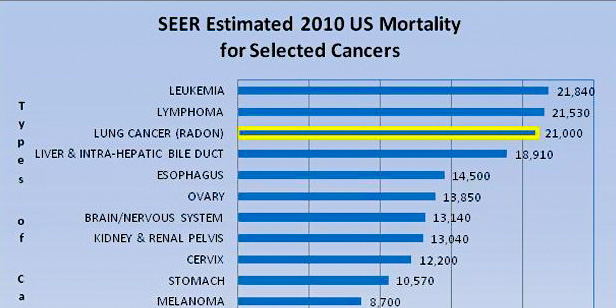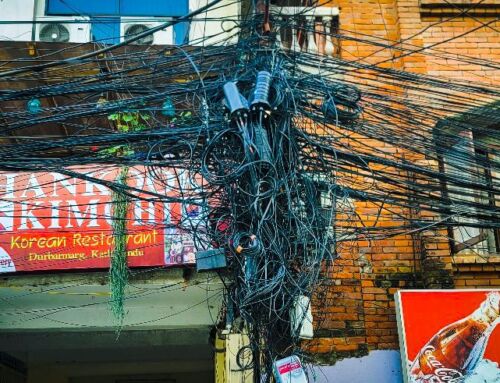View by Topic
Recent Articles
-
Federal Government Finalizes New Efficiency Standards for LightbulbsSaturday, April 13th, 2024
-
2024 IECC is Final After Addressing Preemption IssuesSaturday, April 6th, 2024
-
Settlement Portends Broad Failure in Attempts to Ban Natural GasSaturday, March 30th, 2024
-
SEC Climate Disclosure Rule Stay and Venue Now in the 8th CircuitSaturday, March 23rd, 2024
-
EV Charger Data ApocalypseSaturday, March 16th, 2024
View by Month/Year
“Green Building Law Update” Headlines
Recent Articles & News from
Stuart Kaplow’s blog
at GreenBuildingLawUpdate.com
- Shedding Light on the Future: The Evolution of Lightbulbs in the Wake of New Energy Efficiency Standards April 14, 2024
- 2024 International Energy Conservation Code is Final After Addressing Preemption April 7, 2024
- Settlement Portends Broad Failure in Attempts to Ban Natural Gas March 31, 2024
- SEC Climate Disclosure Rule Stay and Venue Now in the 8th Circuit March 24, 2024
Subscribe to the Green Building Law Update!
Stuart Kaplow brings his expertise and extensive experience to the table with his unique digital publication, "Green Building Law Update". Subscribers receive regular updates to keep them informed about important issues surrounding Environmental Law, Green Building & Real Estate Law, as well as the emerging demand for Environmental Social Governance (ESG).
Get fresh content through the lense of Stuart Kaplow's cutting-edge expertise, innovative commentary and insider perspective. Don't miss another issue! Subscribe below.

Radon Caused More Than 21,000 Deaths Last Year
Radon causes more than 21,000 lung cancer deaths in the U.S. every year. Despite that it is totally preventable, radon is the number one lung cancer killer in nonsmokers.
Radon is widely described as the primary source of indoor and household air pollution in the U.S.
High radon levels are found in every state. Levels can vary widely, even from home to home in the same neighborhood.
Radon is a noble gas that comes from the natural breakdown of uranium, phosphate and a number of common minerals in soil and water and gets into the air you breathe. Radon typically moves up through the ground to the air above and into your home through cracks and other holes in the foundation. Radon can also enter your home through well water. Your home can accumulate radon inside.
Nearly one out of every 15 residences in the U.S. is estimated by EPA to have an elevated radon level of 4 picocuries per liter, or pCi/L, or higher. 4 pCi/L is the EPA action level for radon, but there is no (minimum mandatory) federal cleanup standard or the like because this inorganic compound is naturally occurring.
There is no real question that radon causes cancer. There is genuine dispute about at what level radon is carcinogenic. The science is clear at high levels, but low dose radon risk assessment gets a bit fuzzy?
EPA recommends, if you are buying a home have it tested for radon. A satisfactory radon test should be a contingency in every contract of sale.
For a new home, ask if radon-resistant construction features were used and if the home has been tested.
There is no known safe level for exposure to radon, but EPA recommends you fix a home if the radon level is 4 pCi/L or more. Be aware that the World Health Organization recommends countries adopt a reference level for radon at 2.7 pCi/L, significantly below EPA’s 4 pCi/L. Again, all of this is not without controversy. There are other cost benefit studies that EPA has reviewed questioning evidence of limiting exposure below 8 picocuries?
There is no doubt there is radiation risk even at low levels. Radon levels less than 4 pCi/L still pose a human health risk, and in many cases, may be reduced at very modest cost for testing and fixing the home.
This more “the sun” than “a black hole.” Simple and inexpensive retrofits have been shown to reduce radon levels on average by 50% in houses. The techniques may also lower levels of other soil gases and decrease moisture problems.
First you may wish to find out if you are buying a home in a high radon area. The EPA’s map of radon zones shows which areas have the greatest potential for elevated indoor radon readings.
Radon mitigation features can be easily and inexpensively installed with common building practices and materials. The techniques may vary for different foundations and site requirements, but the basic elements are:
Gas Permeable Layer. This layer is placed beneath the slab or flooring system in new construction to allow the soil gas to move freely underneath the house. In many cases, the material used is a 4 inch layer of clean gravel. This gas-permeable layer is used only in homes with basement and slab-on-grade foundations; it is not used in homes with crawlspace foundations.
Plastic Sheeting. Plastic sheeting seams sealed is placed on top of the gas permeable layer and under the slab to help prevent the soil gas from entering the home. In crawlspaces, the sheeting is placed over the crawlspace floor.
Sealing and Caulking. All below-grade openings in the concrete foundation floor are sealed in existing homes to reduce soil gas entry into the home.
Vent Pipe. The preferred retro fit for an existing home is a 3 inch gas tight or PVC pipe installed from the gas permeable layer through the house to the roof to safely vent radon and other soil gases above the house.
Curiously, existing green building certification systems (e.g., LEED, Green Globes, IgCC, etc.), almost to the one, while purporting to give gravitas to indoor air quality, do not adequately make provision for matters of radon, despite the inorganic compounds recognition as “the” primary source of indoor air pollution. And there are very few, if any, mandatory radon laws across the U.S.
You cannot see, smell, or taste radon. But according to the EPA, radon causes about 21,000 lung cancer deaths per year; deaths that are 100% preventable. Testing is the only way to find out your home’s radon levels. EPA and the Surgeon General recommend testing all homes for radon.









